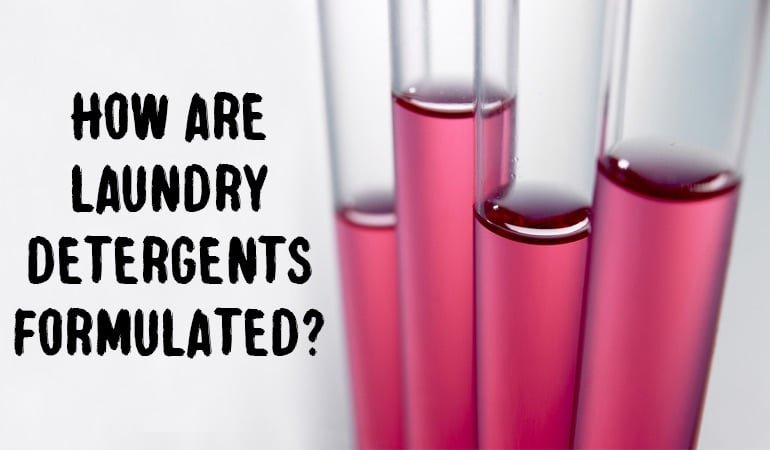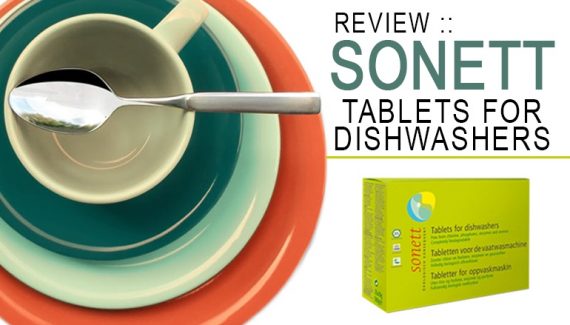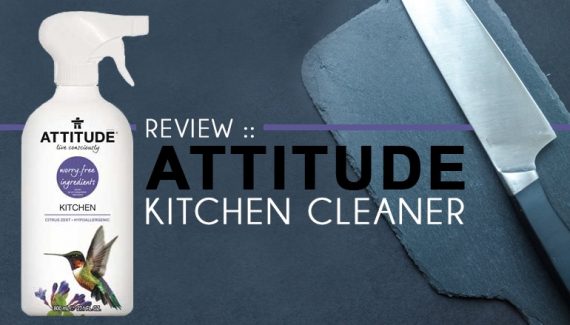Safe Household Cleaning is reader-supported. All reviews are independent and any products reviewed are purchased by the site owner. To help fund this model, some of the links on the site are affiliate links. If you decide to make a purchase from one of these links, this site will receive some commission. At no cost to you. It helps keeps this place running. Learn more
You already know there are numerous problems with our cleaning products otherwise you wouldn’t be here? Our products often aren’t labeled and they can contain an abundance of nasty ingredients known to cause allergies, asthma, or even cancer and hormonal problems.
It’s a pretty grim situation and shouldn’t really be so in this day and age.
It’s what inspired me to start this site. To provide as much information as I could gather about our cleaning products, to review their effectiveness while describing to the best of my ability what is in the product.
We all use laundry detergents of some sort, but very few of us actually know what we’re putting on our clothes and body.
You’ve no doubt looked at a label and wondered what it actually means and the purpose of this article is to demystify the ingredients and give an overview of what the ingredients and labels actually mean.
How are laundry detergents formulated?
Laundry detergents are complex formulations of many chemicals. In the table below, we’ve summarized the key ingredient groups (ingredients may fit into several categories) [1-3].
| Ingredient Group | Ingredient Subgroup | Examples Ingredients | Role in Detergents |
| Surfactants | Anionic | · Sodium lauryl sulfate (SLS)
· Ammonium lauryl sulfate (ALS) |
Present in all detergents, surfactants are the ‘soap’. They clean by reducing surface tension and dispersing dirt. Anionic are the most popular, but the other subgroups have specific uses (e.g. cationic in fabric softeners). |
| Nonionic | · Ethoxylated alcohols
· Fatty acid esters |
||
| Cationic | · Benzethonium chloride
· Cetylpyridinium chloride |
||
| Amphoteric | · Cocamidopropyl betaine | ||
| Builders
(‘sequestering agents’) |
· Citric acid
· Polycarboxylates · Boric acid |
Bind calcium in hard water to prevent the formation of ‘soap scum’. | |
| Bleachers | · Tetraacetylethylenediamine
· Sodium perborate |
Decolorize or remove stains not affected by surfactants (e.g. red wine). | |
| Enzymes | · Proteases
· Lipases · Amylases |
Help to break down difficult stains and allow for lower wash temperatures. | |
| Soil Repellants
(‘polymers’) |
· Carboxymethyl cellulose | Irreversibly bind to clothing fibers, preventing dirt from reattaching. | |
| Foam Regulators | · Dimethylsiloxane | Reduce the quantity of foam. | |
| Whitening Agents
(‘optical brighteners’) |
· Sulfonated diamino-stilbenes
· Distyrylbiphenyl |
Fluorescent agents reflect UV rays, making clothes appear ‘brighter’. | |
| Fabric Softeners | · Eesterquats | Are antistatic, and so fibers appear softer. Also, help to reduce drying times. | |
| Stiffeners | · Starch
· Polyvinyl acetates |
Help to stiffen clothes when ‘fluffy’ is not preferable (e.g. shirts over towels). | |
| Fragrances | · Butylphenyl methylpropional | Add a pleasant smell to detergents. | |
| Dye-Transfer Inhibitors | · Polyvinylpyrrolidon | Help to prevent dyes being transferred between items of clothing. | |
| Other Ingredients | Fillers | · Water (aqua)
· Sodium sulfate |
Give the detergent structure, often with no impact on the cleaning ability. |
| Buffers | · Sodium carbonate | Set the optimal pH for the detergent. | |
| Preservatives | · EDTA
· Benzisothiazolinone |
Prevent the growth of microbes, increasing shelf-lives. | |
Deciphering a laundry detergent label
Using the summary of common ingredients listed above, tackling detergent labels to decipher the components becomes ‘slightly’ easier.
Below are several ingredient labels for popular detergents in the UK and US (correct at the time of writing).
Example Detergents (UK)
Persil Non-Bio Washing Liquid (1.4L)
Ingredients: 15-30%: Anionic Surfactants, 5-15%: Nonionic Surfactants, Soap, <5%: Optical Brighteners, Perfume, Phosphonates, Polycarboxylates
Persil Bio Washing Liquid (1.4L)
Ingredients: 15-30%: Anionic Surfactants, 5-15%: Nonionic Surfactants, Soap, <5%: Enzymes, Optical Brighteners, Perfume, Phosphates, Polycarboxylates, Butylphenyl Methylpropional, Citronellol, Geraniol
Comfort Blue Fabric Conditioner (3L)
Ingredients: 5-15% Cationic Surfactants, <5% Perfume, Hexyl Cinnamal, Butylphenyl Methylpropional, Limonene, Eugenol, Citronellol, Benzisothiazolinone
Example Detergents (US)
Tide PODS 3-in-1 Turbo (16 pods)
Ingredients: Nonionic Surfactants, Anionic Surfactants, Ethoxylated Polyethylene Polyamine (Polymer), Enzymes
Arm & Hammer Laundry Detergent Plus OxiClean (45 fl. oz.)
Ingredients: Biodegradable Surfactants, Enzymes, Baking Soda, Perfume
Seventh Generation Natural Concentrated Liquid (50 fl. oz.)
Ingredients: Water, Sodium Lauryl Sulfate, Coceth 7, Glycerin, Sodium Citrate, Oleic Acid, Sodium Hydroxide, Sodium Chloride, Boric Acid, Calcium Chloride, Protease, Amylase, Methylisothiazolinone, Benzisothiazolinone
What ‘Ingredient-Free’ Means
Without a PhD in formulation chemistry, ingredient labels can still be difficult to interpret. An alternative is to find detergents that are specifically listed as not containing potentially harmful ingredients. These include:
- 100% Biodegradable: Only ingredients that are known to biodegrade in water, and not accumulate, can be added. There are many national standards, but the term is strictly regulated in the EU (EC648/2004) and US (under FIFRA).
- 1,4-dioxane-free: A byproduct of manufacturing ingredients, 1,4-dioxane is a ‘probable carcinogen’. The term is not regulated in the EU or US, and so it is up to manufacturers to test their products for 1,4-dioxane if added to the label.
- Formaldehyde-free: A common preservative, formaldehyde is another ‘probable carcinogen’ and may cause toxicity if doses accumulate over time. The term is not regulated in the EU or US, and so manufacturers are responsible for the testing.
- Phosphate-free: Phosphate detergents are banned in most countries, and so ‘phosphate-free’ is common on ingredient labels. There is a risk of accumulation causing algal bloom, which reduces water oxygen concentrations (‘eutrophication’).
- Sulfate-free: Sulfates are common surfactants, and so ‘sulfate-free’ detergents use alternative chemicals. The alternatives may not necessarily be more desirable, as all surfactants are irritants.
- Paraben-free: Parabens are preservatives that may be carcinogenic, cause toxicity, and accumulate in the environment. The detergent will likely contain alternative preservatives, and so if listed, these would need to be individually reviewed.
- Fragrance-free: The manufacturer does not add fragrances to the detergent. Fragrances may cause dermatitis or allergies in certain individuals.
With many of these terms, it is the responsibility of the manufacturer to prove that their product is ‘free’ of an ingredient.
Simply not adding a chemical can be sufficient to include the term on the label (e.g. a detergent may not list 1,4-dioxane as an ingredient, as it is not specifically added, but may be present in trace amounts).
For these unregulated terms, the only way to confirm the level of testing is to contact the manufacturer directly.
And don’t be fooled by marketing words such as ‘natural’, ‘for sensitive skin’, ‘hypoallergenic’ or ‘plant-based’. these phrases aren’t regulated, and so frequently do not have any implications for the ingredients or their safety.]
And last but not least…
Use this site and our knowledge to assess what you want from a laundry detergent, what ingredients you want to avoid and find the best performer according to our reviews.
References
- Smulders, E., & Sung, E. Laundry detergents, Ingredients and products. 2011. Ullmann’s Encyclopedia of Industrial Chemistry.
- Bajpai, D. Laundry detergents: An Overview. 2007. Journal of Oleo Science. 56(7), 327-340.
- European Ecolabel. Revision of Ecolabel Criteria for Laundry Detergents 2008-2010. 2011. [Accessed: 20/01/17] www.ec.europa.eu



No Responses Yet